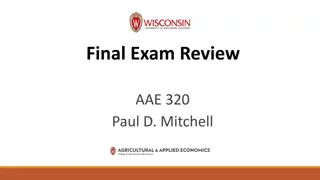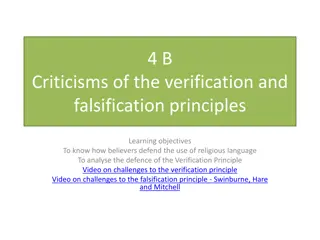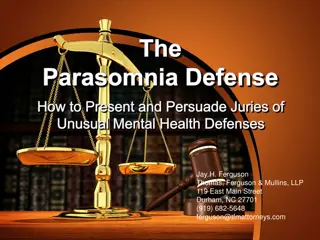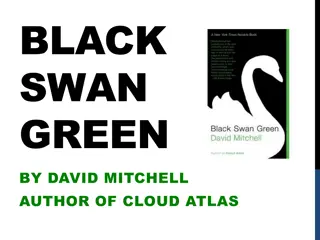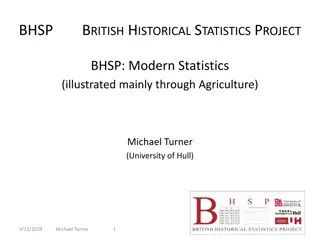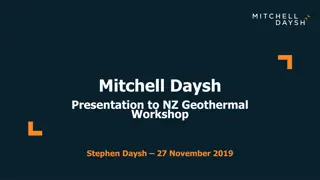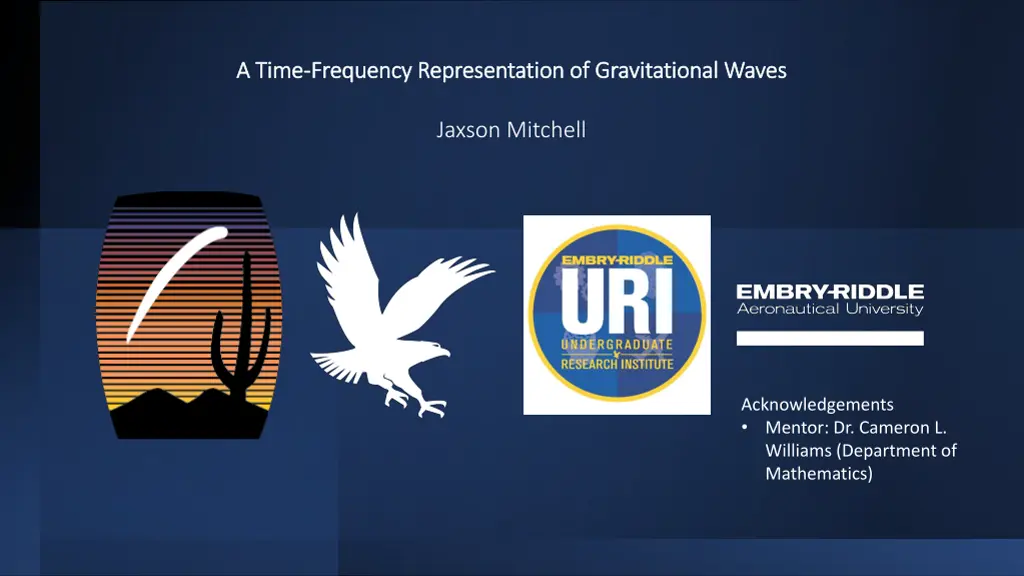
Frequency Representation of Gravitational Waves Analysis
Explore the analysis of gravitational waves through frequency representation techniques like chirps and discrete n-transform. Learn about chirp signals, Fourier transforms, noise filtration, pitfalls, short-time n-transform, and voxel representations in this research study. Gain insights into extracting chirps from gravitational wave data, implementing discrete methods for analysis, and visualizing time-frequency representations.
Download Presentation

Please find below an Image/Link to download the presentation.
The content on the website is provided AS IS for your information and personal use only. It may not be sold, licensed, or shared on other websites without obtaining consent from the author. If you encounter any issues during the download, it is possible that the publisher has removed the file from their server.
You are allowed to download the files provided on this website for personal or commercial use, subject to the condition that they are used lawfully. All files are the property of their respective owners.
The content on the website is provided AS IS for your information and personal use only. It may not be sold, licensed, or shared on other websites without obtaining consent from the author.
E N D
Presentation Transcript
A Time A Time- -Frequency Representation of Gravitational Waves Frequency Representation of Gravitational Waves Jaxson Mitchell Acknowledgements Mentor: Dr. Cameron L. Williams (Department of Mathematics)
What are chirps? Chirp- A signal whose frequency changes with time The Fourier transform of a chirp. Gravitational waves (a chirp signal) The discovery of gravitational waves: a gentle fight against noise - Scientific Figure on ResearchGate. Available from: https://www.researchgate.net/figure/Plots-of-the-signal-of-the-first-gravitational-wave-direct-detection-On-the-top- left_fig1_319196709 [accessed 6 Apr, 2023] Goals of this research Implement a discrete method for analyzing chirps Extract chirps from gravitational waves An example of a chirp signal with chirp order n = 3 Fourier transform of the chirp signal.
The discrete n transform To compute the chirps, the signal becomes decomposed into wavelet step functions. If a chirp is centered about t = 0, the discrete n transform can extract oscillatory behavior of signals of the form cos( ??/?) at Step function of a signal with 30 steps per second The software s dpt function The 3-frequency data of the chirp The same chirp signal as before Components of the transform
Gaussian noise filtration Pure signal and noisy signal with a standard deviation of = 0.3 3-frequency data of the signal Chirp signals can filter out white noise using this software. Pure signal & filtered noisy signal. 3-frequency filtered data of the signal
Pitfalls of the n transform Chirps can be extracted, only if aligned properly. 4-transform Translation of a signal by .25 seconds 4-transform
Short-Time n Transform Instead of one transformation, now taking small time steps and a transformation for each one gives a new time frequency representation of a signal. Short-time transform of a multi-chirp signal. The local peaks at the intersections correspond to the chirp frequencies and times. Two chirps of order 3 centered around t = 3.5 & 8 seconds.
Voxel representations Applying the short time transform over a range of chirp orders gives a three-dimensional representation of data. Three signals of varying chirp order creating a signal. To visualize it, a voxel plot is used which can give an idea of the maximum frequencies. Voxel representation of the signal. The maximum can be seen at t = 10, n = 3. n = 1, 2, 3, 4 short time transforms which make up the voxel representation
Application to GWs The software can be applied to extract chirp data from gravitational waves using the voxel representation. Generated gravitational wave signal n=4 short-time transform Voxel representation of a gravitational wave. Threshold = .7
Future Research Use a super computer to generate and analyze a large number of analytical gravitational waves. Study different types of noise within signals Study different types of chirp signals (seismic) Optimize the code The major content of the gravitational wave will be put into a neural network to try to fit for its physical parameters such as the mass. O-notation plot, dpt is O(n^2) https://pub.towardsai.net/big-o-notation-what-is-it-69cfd9d5f6b8




